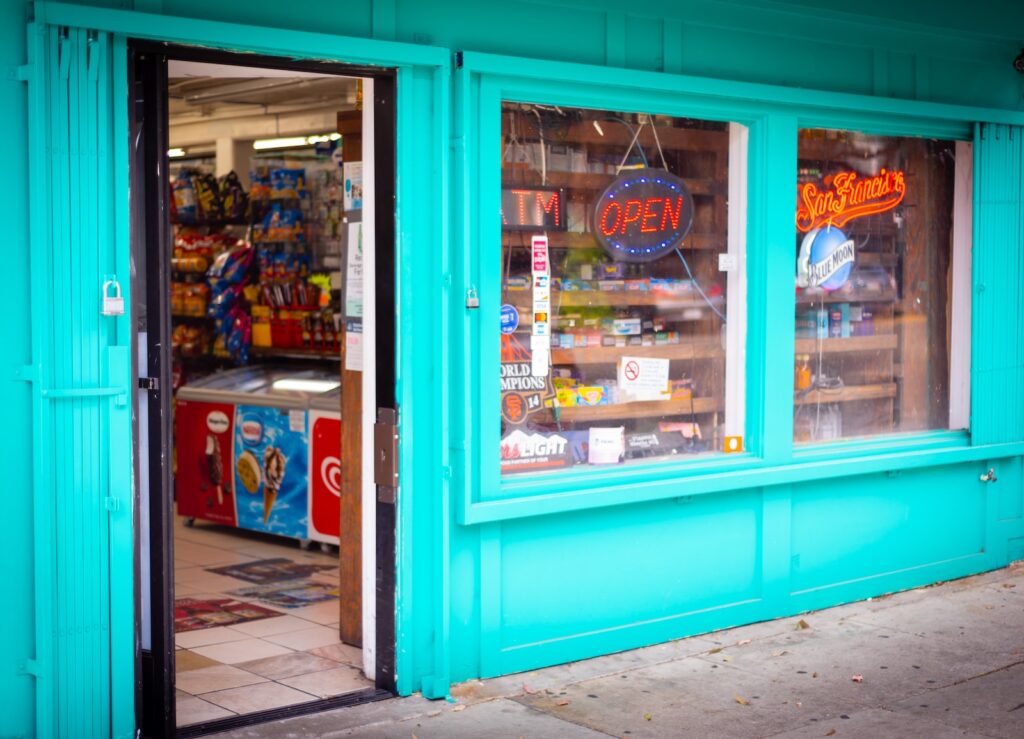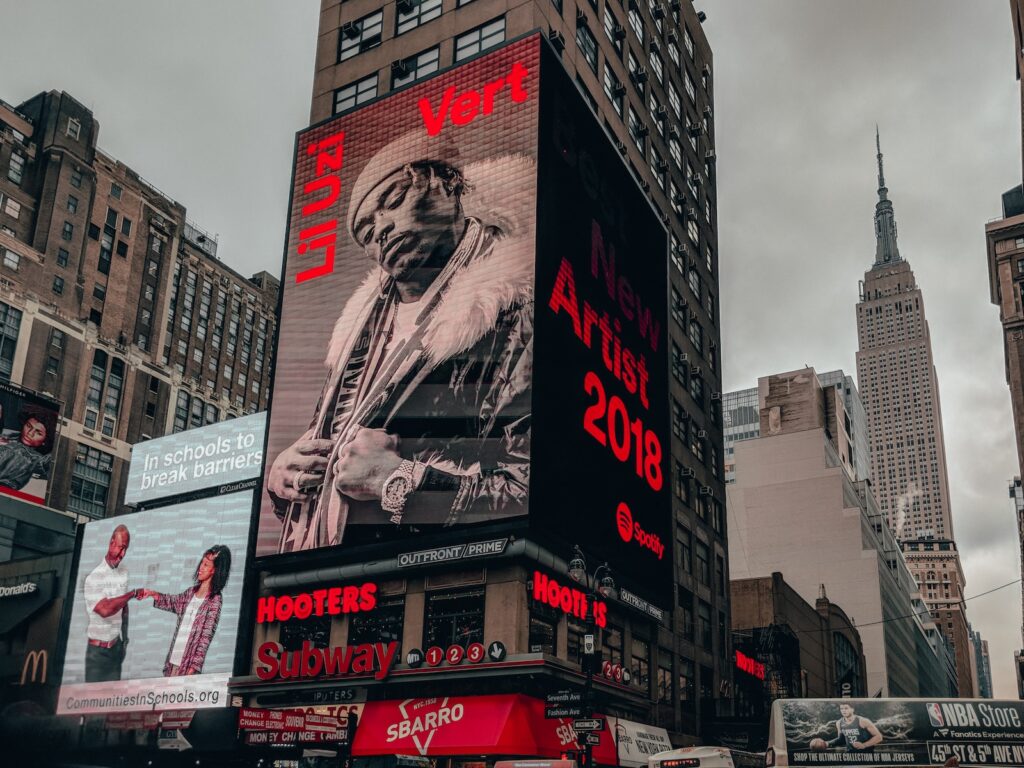Introduction to Out of Store vs OOH Marketing
In the ever-evolving realm of marketing, distinguishing between different strategies – Out of Store vs OOH Marketing and their nuances is crucial for crafting effective and targeted campaigns. Two such strategies that are often mentioned in the marketing landscape are “Out of Store Marketing” and “Out of Home Marketing.” While these terms might sound similar, they represent distinct approaches, each with its unique focus, objectives, and execution. In this comprehensive article, we will delve into the intricacies of both Out of Store Marketing and Out of Home Marketing, highlighting their differences, applications, and the impact they can have on brand success. By the end of this exploration, you will gain a comprehensive understanding of these strategies and how to employ them effectively in your marketing efforts.

Out of Store Marketing: Expanding Beyond the Traditional Storefront
Out of Store Marketing is a multifaceted approach that seeks to engage with consumers beyond the confines of a brand’s physical store or business location. It is a comprehensive strategy that encompasses various activities and initiatives aimed at creating brand awareness, building connections, and achieving marketing objectives. The primary goal of Out of Store Marketing is to extend a brand’s presence, values, and experiences to a broader audience outside the traditional store environment. Here are the key distinctions and characteristics of Out of Store Marketing:
- Scope and Versatility: Out of Store Marketing is broad in scope and highly versatile. It includes a wide range of strategies such as experiential marketing, sponsorships, events, content marketing, public relations, influencer collaborations, and more. The focus is on creating brand experiences, connecting with consumers, and reinforcing the brand’s values and culture.
- Emotional Engagement: This strategy places a strong emphasis on emotional engagement and building a brand’s reputation. It goes beyond the transactional aspect of business to foster authentic connections with consumers.
- Building Trust and Loyalty: Out of Store Marketing aims to build trust and loyalty with consumers by delivering consistent brand experiences, values, and positive associations. It focuses on the long-term impact of the brand in consumers’ lives.
- Examples of Out of Store Marketing: This strategy includes initiatives like organizing product launch events, creating engaging content, partnering with influencers, and supporting social or environmental causes.
Out of Home Marketing: Navigating the Public Spaces
Out of Home (OOH) Marketing, on the other hand, specifically refers to advertising and promotional activities that target consumers when they are outside of their homes. It is a subset of Out of Store Marketing, focusing primarily on creating awareness, capturing attention, and delivering messages to a wide audience in high-traffic areas.

Here are the key distinctions and characteristics of Out of Home Marketing:
- Emphasis on Advertising: Out of Home Marketing is primarily focused on advertising. It involves the placement of advertisements in public spaces to create brand exposure. These advertisements can include billboards, transit ads, street furniture ads (bus shelters, benches, etc.), digital signage, and other advertising placements.
- Creating Awareness: The primary goal of OOH Marketing is to create awareness about a brand, product, or service. It aims to capture the attention of people in public spaces and deliver a message effectively.
- Repetition and Exposure: Repetition is a key component of OOH Marketing. The more consumers encounter a brand’s message in public spaces, the more likely they are to remember it. OOH Marketing leverages the exposure factor to enhance recognition.
- Examples of OOH Marketing: Some common examples of Out of Home Marketing include billboards on highways, advertisements in subway stations, bus stop posters, digital screens in malls, and electronic billboards in prominent locations.
The Synergy and Interplay – Out of Store Vs OOH Marketing
While Out of Store Marketing and Out of Home Marketing have distinct focuses and characteristics, it’s important to recognize that they are not mutually exclusive. In fact, these two strategies often complement each other and can be integrated for more comprehensive marketing campaigns.
- Enhancing Brand Exposure: Out of Store Marketing can create emotional connections with consumers and build loyalty. Meanwhile, OOH Marketing can reinforce brand recognition by ensuring that consumers encounter the brand’s message consistently in public spaces.
- Advertising in Experiential Marketing: Out of Store Marketing events and experiences can incorporate OOH Marketing elements. For example, an experiential marketing event might utilize billboards or transit ads to promote the event in the vicinity.
- Influence of Social Media: OOH Marketing efforts can be amplified through social media. Consumers often share images and experiences related to OOH advertisements, enhancing brand exposure.
- Consistency in Branding: A consistent brand image and message are essential for both strategies. Whether it’s a physical event or a billboard, consumers should encounter a coherent brand identity.
Out of Store vs OOH Marketing Examples and Use Cases:
Out of Store and Out of Home (OOH) Marketing are distinct approaches, each with its unique set of examples and use cases that showcase their effectiveness. Out of Store Marketing delves into experiential events, sponsorships, influencer collaborations, and content marketing to create emotional connections and build brand loyalty.
In contrast, OOH Marketing thrives in the world of billboards, transit ads, digital signage, and street furniture ads to deliver brand exposure and messages to a broad audience in public spaces. By examining a multitude of examples and use cases for both strategies, businesses can tailor their marketing efforts to capture attention, foster recognition, and engage consumers effectively in a competitive marketplace.
Out of Store Marketing Examples and Use Cases:
- Experiential Marketing Events: Brands like Red Bull often organize extreme sports events, music festivals, or unique stunts to create memorable experiences that engage audiences. These events not only build brand recognition but also connect with consumers on an emotional level.
- Sponsorships and Partnerships: Companies like Nike frequently partner with sports teams, athletes, and major sporting events. These partnerships allow the brand to align with a specific lifestyle or activity, reinforcing brand identity.
- Influencer Collaborations: Brands collaborate with social media influencers to create authentic connections with their target audiences. For instance, a fitness brand might partner with a popular fitness influencer to promote their products.
- Social and Environmental Initiatives: Brands like Patagonia are known for their commitment to environmental causes. Their initiatives, such as the “Worn Wear” program, engage consumers who share their values and promote sustainability.
- Content Marketing: Out of Store Marketing includes creating valuable content that resonates with the target audience. Companies like GoPro produce action-packed videos that showcase the capabilities of their cameras, engaging adventure enthusiasts.
- Pop-Up Stores: Pop-up shops allow online retailers like Amazon to engage with customers in physical spaces, providing them with hands-on experiences and immediate access to products.
Out of Home Marketing Examples and Use Cases:
- Billboards: The classic example of Out of Home Marketing is the use of billboards. Brands like Coca-Cola use billboards to create broad awareness and recognition, often featuring catchy slogans and imagery.
- Transit Advertising: Public transportation hubs, such as subway stations and bus stops, are prime locations for advertising. Companies like Apple use transit ads to showcase their latest products to commuters.
- Digital Signage: In high-traffic areas like shopping malls, digital screens are used to display advertisements and promotional content. Retailers like H&M use digital signage to promote their fashion lines.
- Point-of-Purchase Displays: At supermarkets, point-of-purchase displays are commonly used to promote products. Beverage companies like PepsiCo use such displays to capture the attention of shoppers.
- Street Furniture Ads: Benches, bus shelters, and other street furniture often feature advertising. Brands like Samsung might use street furniture ads to highlight their latest tech innovations.
- In-Airport Advertising: Airports are prime locations for advertisers to reach a diverse and engaged audience. Airlines like Emirates often feature luxury brand advertisements within their in-flight entertainment systems.
- Mobile Billboards: Mobile billboards mounted on trucks or other vehicles can roam city streets, delivering brand messages to various locations. Political campaigns and local businesses use this approach.
These examples and use cases of Out of Store Marketing and Out of Home Marketing highlight the diverse methods and strategies that brands employ to engage with consumers both in and out of physical storefronts. By employing a mix of these approaches, businesses can create a comprehensive marketing strategy that fosters brand recognition, drives consumer engagement, and ultimately contributes to their success in a competitive market.
Conclusion: A Holistic Approach to Marketing
In the dynamic world of marketing, it’s essential to grasp the distinctions between various strategies and understand how they can work in tandem. Out of Store Marketing and Out of Home Marketing are both valuable tools in a marketer’s arsenal, each with its unique strengths and applications. While Out of Store Marketing focuses on creating emotional connections, building trust, and fostering brand loyalty, Out of Home Marketing excels at creating brand exposure and delivering messages to a broad audience in public spaces.
A holistic approach to marketing often involves integrating both strategies to maximize impact. By understanding the distinctions and recognizing the synergy between these approaches, businesses can craft more comprehensive and effective marketing campaigns that resonate with consumers, foster brand recognition, and drive success in a competitive marketplace.


